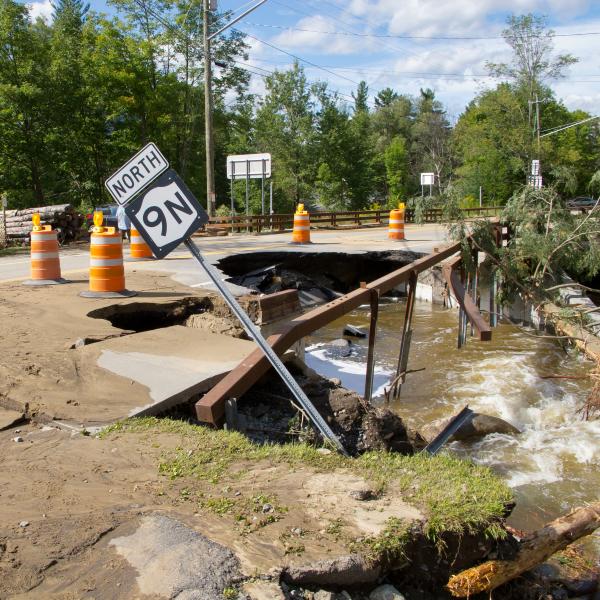The short answer is maybe. Several scientific studies released in 2018 point to widespread groundwater contamination from road salt across New York State. AsRA's science staff has hypothesized that this was occurring. Our bi-weekly stream monitoring shows elevated chloride concentrations in late summer and early fall, months after salt was last applied and during a time of year when our streams are primarily fed by groundwater. These new results make road salt pollution a human health issue.
Early in 2018 the Adirondack Watershed Institute, our research partner, released the results of a park-wide groundwater study that showed many private drinking water wells exceeding the EPA drinking water guidance value for sodium (20 mg/L). This value is meant to protect individuals that, for health reasons, are on very low sodium diets (500 mg/day). 55% of the 114 wells tested that receive runoff from state roads exceeded this guidance, while zero wells receiving no road runoff exceeded this value. The highest well tested had a sodium concentration of 748 mg/L. That means if you drank 2 liters of that water you would be consuming 1,496 mg of sodium. This much additional sodium would be a concern even for a healthy adult.
Research from the Cary Institute in East Fishkill Township, Dutchess County, NY found similar results. They reported that chloride concentrations in wells increased with increases in the amount of impervious surface within 250 meters of the well and declined with increasing distance to the nearest road. They also found that wells with porous surface geology and well-drained soils had higher chloride concentrations.
Support our work to reduce road salt pollution in our surface and groundwater within the Ausable River watershed and beyond. Give with confidence today!
A study of groundwater in the Town of Orleans, NY conducted by researchers at Virginia Tech showed similar results. Citizens in this town have long been concerned about groundwater contamination from a New York State salt storage barn. 82% of 90 wells tested exceeded the sodium guidance with the highest being 786 mg/L. They also found elevated levels of sodium and chloride in wells adjacent to major highways. What is perhaps more concerning, is the study also found elevated concentrations of both lead and copper in the wells tested, although, there was no relationship between elevated concentrations of these metals and proximity to the salt barn. The authors attribute this in part, to the variation in the age of plumbing and fixtures among households. Bench-scale testing did confirm that increased chloride concentrations increased corrosion of plumbing fixtures and leaching of lead. 12% of the wells tested exceeded the action level for lead (15 μg/L) and 74% had detectable lead in first draw samples.
These researchers went on to model the potential statewide groundwater contamination as a result of road salt storage facilities and general road salt application. They found that 35,000 private wells may be impacted by salt storage facilities and 460,000 wells from general salt application. This represents 26% of private drinking water wells in New York State.
There is a significant need to better understand how road salt affects groundwater quality and the impact it has on human health. Private wells in New York State are not required to be monitored, therefore many homeowners may be unaware of the quality of their water and potential risks to their health. This will disproportionally impact low-income rural communities that do not have access to public water supplies and the protections that come along with them.
Sign-up for our e-newsletter to get weekly updates on the latest stories from the Ausable River Association.





